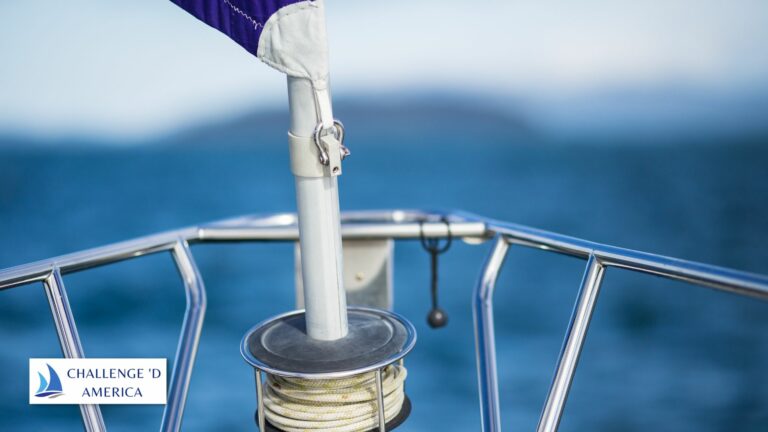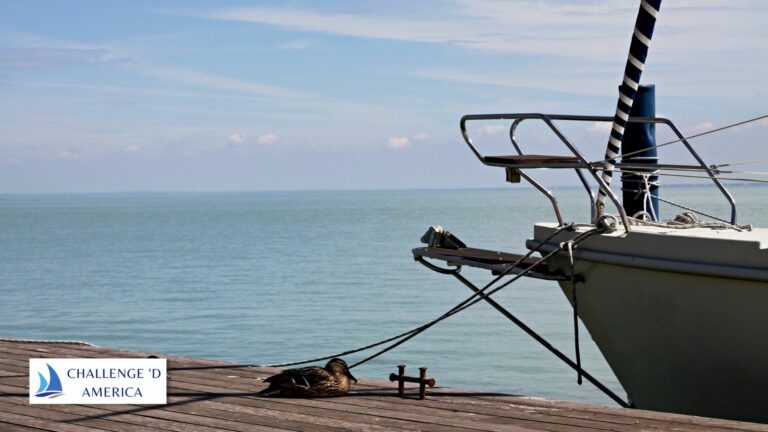How Much Does It Cost To Rig a Sailboat?
Introduction
Rigging a sailboat is an essential part of sailboat maintenance, and it’s important to understand the cost involved in order to make sure you’re getting the best value out of your investment.
The cost of rigging a sailboat can vary widely depending on the type of boat, materials used, and whether you hire someone or do it yourself (DIY).
In this article, we’ll explore the cost associated with rigging a sailboat, as well as the pros and cons of doing it yourself versus hiring a professional rigger.
Definition of Rigging a Sailboat
Rigging is essentially the process of attaching all the necessary lines and hardware required for sailing, such as sails, halyards, sheets, blocks, and more.
This process can be done yourself or by hiring a professional rigger who has the knowledge and experience needed to get the job done right.
Cost of Rigging a Sailboat
The cost of rigging a sailboat can vary drastically depending on what materials are used and whether you opt for professional rigging or DIY rigging.
According to Cockerill, an average 40-foot boat requires approximately $100 per foot for wire rigging ($4,000) as well as additional fees for hauling/launching the boat and unstepping/stepping the rig (an additional $2,500 or so).
Benefits of Rigging a Sailboat Yourself
Doing it yourself can be both financially beneficial and personally satisfying when it comes to rigging your own boat.
Not only will you save money on labor costs, but you’ll also learn valuable skills that can be applied towards future projects or repairs down the road—not to mention feeling proud that you completed such an undertaking!
Materials Required for DIY Rigging
If you decide to take on this project yourself, there are certain materials that you’ll need in order to get started: wire rope (1/8 inch or larger), turnbuckles (aka “bottle screws”), shackles, swage fittings (or “bottle screws” with eye ends), thimbles, turnbuckle adjusters (optional), pliers/cutters/vice grips (or equivalent tools).
Additionally, you may need specialized tools like wire strippers and crimpers if you plan on purchasing pre-made fittings from your local hardware store or online retailer.
Step-by-Step Guide for DIY Rigging
Below is a step-by-step guide for rigging your own sailboat:
1) Measure your mast: Make sure all measurements are accurate before beginning any work since this will ensure everything fits properly once complete,
2) Cut wire rope: Use wire cutters or vice grips to cut the required length,
3) Attach fittings: This includes swaging fittings onto one end of each length and attaching thimbles onto both ends,
4) Install turnbuckles: Place turnbuckles at each end, adjust them so they form an X shape with equal tension on each side,
5) Attach shackles: Connect two shackles at either end—one at each turnbuckle,
6) Adjust tension: Adjust turnbuckles by hand until desired tension is reached, use pliers if extra force is needed,
7) Secure lines: Finally secure all lines with stainless steel cable ties/clamps after tension is adjusted correctly, these will prevent any unexpected slack from forming during sailing conditions.
Advantages To Professional Rigging
Hiring a professional rigger can be beneficial in many ways—not only will they have access to all necessary materials (including specialized tools), but they also have years of experience in rigging different types and sizes boats—ensuring everything will be done properly without any unnecessary risks due to lack of knowledge or expertise on your part.
Additionally, many professionals offer warranties with their services which cover replacements in case something goes wrong later down the line!
Disadvantages to Professional Rigging
The main disadvantage associated with hiring a professional rigger is obviously cost—as previously mentioned prices can vary quite drastically depending on who you hire and what type/size boat needs rigging—so it’s important to shop around before committing yourself too far into any agreement!
Additionally, some may not have access to certain parts or materials needed for certain projects—so make sure you check availability beforehand or risk being left stranded mid-project!
Factors That Influence The Cost Of Professional Rigging
The cost associated with professional rigging largely depends on several factors such as type & size of boat being rigged (bigger boats require more materials & time), material quality & availability (some parts may need ordering from overseas suppliers leading to longer wait times), location & distance traveled if boat needs hauling/launching etc., type & number of fittings needed (some fittings require specialized tools which add additional costs).
All these factors need consideration when calculating total costs associated with professional rigging services!
Tips For Finding An Affordable Professional To Rig Your Boat
When looking into hiring someone professionally there are several things one should consider in order to find an affordable option without sacrificing quality: ask around among friends & family who have had similar projects done in past—word-of-mouth recommendations can often provide great deals!, shop around online & compare prices between different providers before making final decision—you may find some hidden gems!, don’t go too cheap—it pays off in long run investing into quality parts & reliable services!
Conclusion
Rigging a sailboat is no small task but can be achieved successfully by either doing it yourself or hiring someone professionally depending on budget & skill level available! Knowing all costs associated with project beforehand eliminates chances for any nasty surprises later down line so take time researching before committing into anything!







